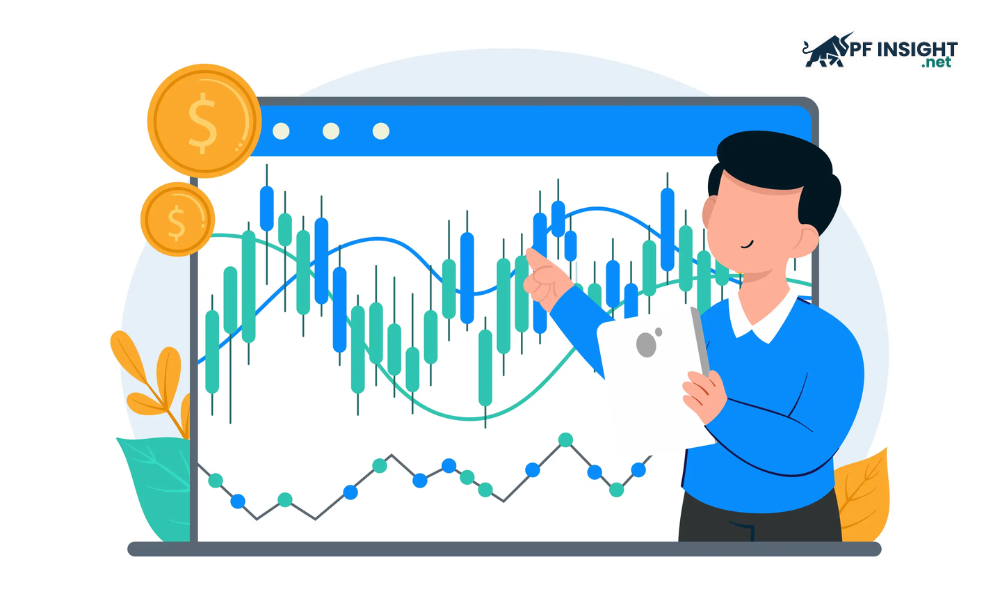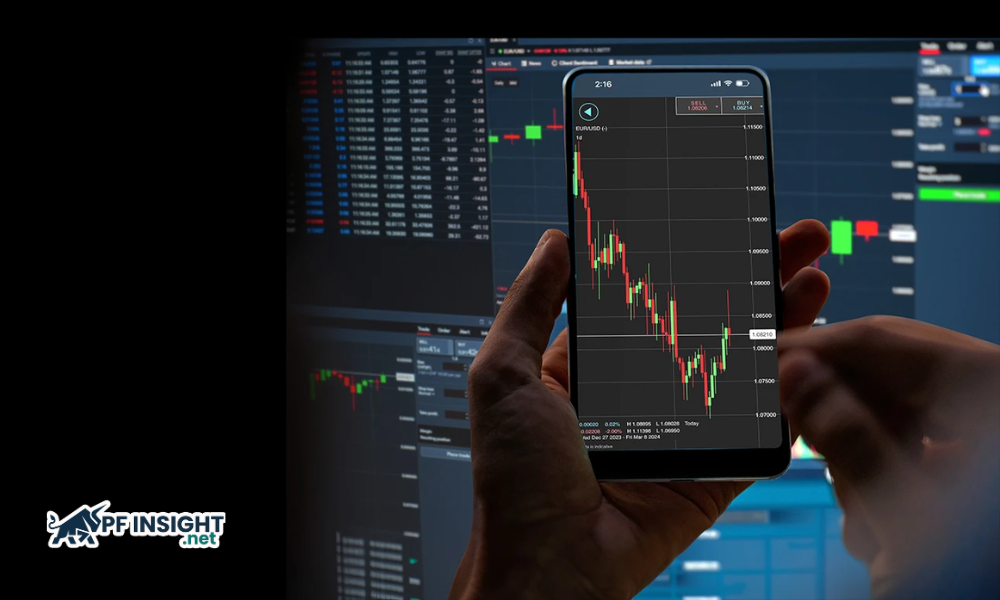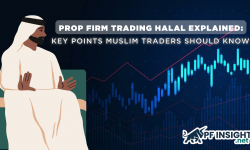Market execution is an order type that allows traders to execute trades immediately at the current market price. Unlike pending orders, this type of order is filled instantly without relying on a predetermined price. Understanding what is market execution helps traders respond proactively to price movements, manage risk, and take advantage of short-term opportunities in the market.
- What is spot trading and how does it work in 2025
- Profit taking strategy – How to know the right time to lock in your gains?
- Prop firm trading halal explained: Key points Muslim traders should know
What is market execution?
Market execution is a mechanism that allows you to open or close a trading order immediately at the current market price. When using this type of order, the system will automatically execute the transaction at the best available price, instead of waiting for the desired price. The trader only needs to select the trading volume, and the price will be determined according to the current market fluctuations.
The ever-changing nature of the market makes it impossible to guarantee an exact price match. When you place an order, even within the instant of execution, the price can change rapidly. This often results in a buy order being executed at an unfavorable (higher) price or a sell order being executed at a lower price than expected. This unwanted price difference is called slippage.
For example, you intend to buy the GBP/USD currency pair at a price of 1.2760/1.2763 (bid/ask). When you click “Buy”, the market may move quickly and the price changes to 1.2764/1.2767 before the system has finished processing. As a result, your buy order is filled at 1.2767, a few pips higher than the price you initially saw. This is a typical situation of slippage in Forex trading.
How market execution works

Once you understand what market execution is, you can see that this type of order is completely different from a pending order. Traders do not need to set a desired price in advance, but the system will automatically match the order according to the actual market price at the time of the transaction, reflecting the fluctuations of supply and demand in the market. The market execution process is as follows:
Bước 1: Select asset and trade volume
To better understand what market execution is, traders will first choose the type of market they want to trade, such as forex, stocks, commodities, or indices. Next, they determine the order volume that is appropriate for the account size and acceptable risk level. Adjusting the lot size appropriately helps to optimize profits while ensuring the safety of capital.
Bước 2: Order sent to the market
Once the trader presses the “Buy” or “Sell” button, the order is immediately sent to the broker’s server and then transmitted to liquidity providers or the interbank market. This process is almost instantaneous, ensuring that the order is executed quickly at the most accurate price according to actual market fluctuations.
Bước 3: Order executed at current market price
Orders are filled at the best available price at the time the order is received. However, during periods of high volatility, prices can change rapidly, causing the price to be slightly different from the price displayed on the trading platform. This small deviation is called slippage and is common in real-world trading.
When should traders use market execution?
What is market execution? This is a form of instant order matching, allowing traders to place orders at the best available price on the market. Market execution is especially useful when you need to react quickly to strong fluctuations and take advantage of short-term opportunities. However, it is not always appropriate to apply it. Here are some cases where it should be used:
- When the market is trending strongly: When the market is facing important events, such as the Fed interest rate announcement or the NFP report, prices tend to surge. Market execution is an effective option because it allows you to execute orders immediately, catch the movement and take advantage of profit opportunities without having to wait for the order to be filled at a predetermined price.
- When you need to enter orders quickly to avoid missing opportunities: In situations where market signals only last for a moment, using pending orders can cause you to miss good opportunities. Understanding what is market execution helps traders proactively enter orders as soon as signals appear, especially when trading on news or when taking advantage of strong price momentum increases and decreases.
- When using scalping or day trading strategies: With short-term trading strategies such as scalping or day trading, order execution speed is an important factor. Just a few seconds of delay can cause a profit opportunity to disappear. In this case, market execution becomes the optimal choice, as it helps orders to be executed instantly, ensuring a quick response to any price fluctuations in the market.
- When the market is liquid: During highly liquid trading sessions such as London or New York, market execution orders are often filled quickly with minimal price differences. Understanding what market execution is allows traders to take advantage of this, ensuring that the trade is filled at the price shown on the market chart.
Benefits and limitations of market execution in trading
To apply market execution effectively, you should carefully evaluate the strengths and weaknesses of this method. Understanding the advantages and disadvantages will help you build a suitable strategy, control risks and maximize the profit potential in the market.

Benefit
- Thanks to its lightning-fast processing speed, market execution allows orders to be executed almost as soon as you press the button, ensuring you stay ahead of trading opportunities during periods of high market volatility.
- You can take advantage of any trading opportunity as soon as it appears, thanks to the ability to enter orders instantly without having to set up cumbersome conditions like in other types of pending orders.
- If you are a fast trader who wants to take advantage of every small movement of the market, then market execution will be the most suitable method to optimize opportunities.
- High order matching speed helps minimize the risk of slippage, especially when the market has good liquidity and stable volatility.
Limitations
- Rapid price movements may cause your order to be filled at a different price than expected.
- The lack of control over the execution price is a limitation compared to pending orders.
- The effectiveness of the order also depends on market conditions, especially the spread and liquidity.
The difference between instant execution and market execution
In Forex trading, instant execution and market execution are two popular order matching methods but have different operating mechanisms. Understanding the difference between them helps traders optimize the timing of placing orders and avoid the risk of unwanted slippage.
- Instant execution: When using Instant Execution, you can specify the exact price you want for your trade. If the market does not have that price, the order will not be filled. However, in cases of high market volatility or insufficient liquidity, the order may be rejected instead of being filled at a different price.
- Market execution: Market execution ensures that your trade order is always executed immediately at the current market price. This mechanism helps you react quickly to price fluctuations, but also carries the risk of slippage, as the actual price executed may be different from the price you see when placing the order.
Below is a comparison table between instant execution and market execution orders:
|
Characteristic |
Instant execution | Market execution |
| Price | You actively determine the price at which you want to make the transaction. |
Orders are matched at the best price available on the market. |
|
Processing speed |
Likely to occur at a slower pace. | Extremely fast. |
| Order matching ability | There is a possibility that the order will not be executed. |
Always done |
|
Slippage |
Minor |
May occur |
Tips for using market execution effectively

Market execution offers the advantage of speed, but to get the most out of it, traders need to understand how to use it in different market conditions. Here are some practical tips to help you optimize your trading experience:
- Choose a time when the market is less volatile: Understanding what market execution is helps traders recognize the risk of slippage when the market is highly volatile, such as after economic news or major events. During these times, orders may execute at different prices than expected. To reduce risk, trade during high liquidity but less volatile hours such as the London session or mid-New York session.
- Combine with technical indicators: Do not execute market orders based on emotions. Traders should combine technical indicators such as RSI, MACD or moving average to determine the exact entry point. Confirming the signal before clicking “Buy” or “Sell” helps reduce risk and optimize the chance of successful trading.
- Understand spreads and trading costs: Understanding what market execution is helps traders understand the impact of spreads and commissions on trading costs. Different brokers have different bid-ask spreads, and when the market is volatile or liquidity is low, spreads can widen, increasing costs. Therefore, always check the actual spread and prioritize brokers that are transparent about fees before placing an order.
- Practice with a demo account: Before placing a real order, practice on a demo account. This will help you get familiar with the execution speed, slippage, and how the platform handles orders in real market conditions, increasing your confidence and reducing your risk when trading live.
Conclude
Understanding what is market execution is a crucial step for traders to seize opportunities and manage risk effectively in the market. Mastering the order execution mechanism, its advantages and disadvantages, and how to apply it appropriately will help you make quick decisions, optimize profits, and minimize slippage under all market conditions, especially during high volatility. For more updated knowledge, don’t forget to visit the website pfinsight.net







